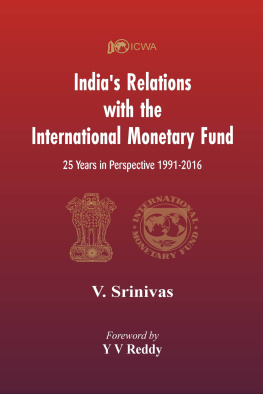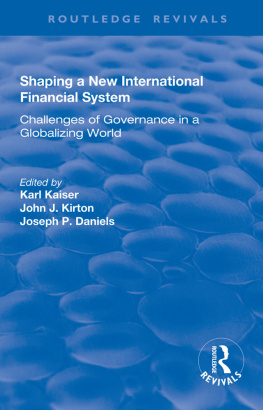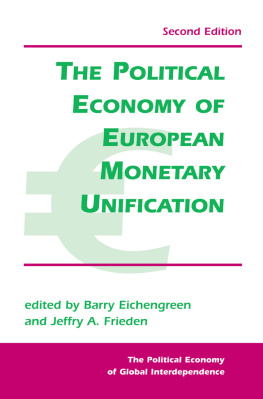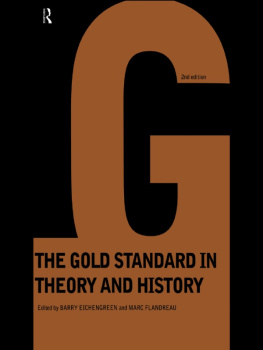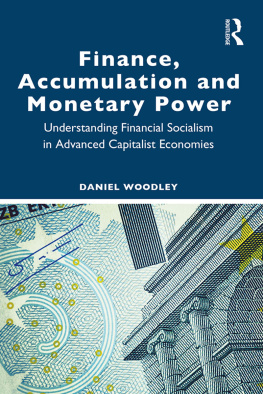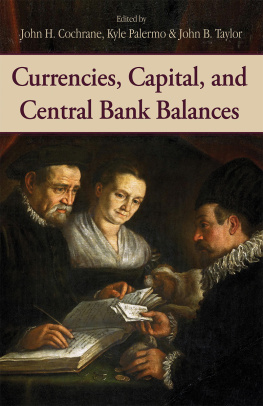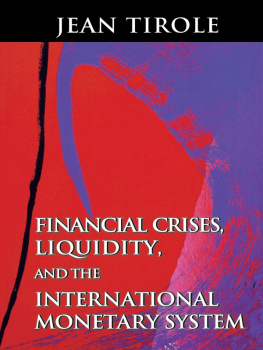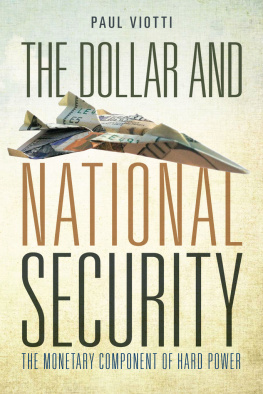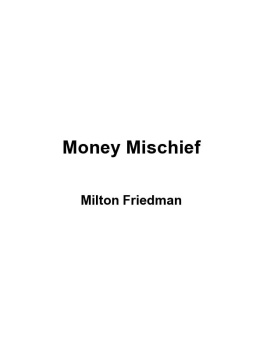Eichengreen - Globalizing capital: a history of the international monetary system
Here you can read online Eichengreen - Globalizing capital: a history of the international monetary system full text of the book (entire story) in english for free. Download pdf and epub, get meaning, cover and reviews about this ebook. year: 2013, publisher: Princeton University Press, genre: Science. Description of the work, (preface) as well as reviews are available. Best literature library LitArk.com created for fans of good reading and offers a wide selection of genres:
Romance novel
Science fiction
Adventure
Detective
Science
History
Home and family
Prose
Art
Politics
Computer
Non-fiction
Religion
Business
Children
Humor
Choose a favorite category and find really read worthwhile books. Enjoy immersion in the world of imagination, feel the emotions of the characters or learn something new for yourself, make an fascinating discovery.

- Book:Globalizing capital: a history of the international monetary system
- Author:
- Publisher:Princeton University Press
- Genre:
- Year:2013
- Rating:4 / 5
- Favourites:Add to favourites
- Your mark:
- 80
- 1
- 2
- 3
- 4
- 5
Globalizing capital: a history of the international monetary system: summary, description and annotation
We offer to read an annotation, description, summary or preface (depends on what the author of the book "Globalizing capital: a history of the international monetary system" wrote himself). If you haven't found the necessary information about the book — write in the comments, we will try to find it.
Eichengreen: author's other books
Who wrote Globalizing capital: a history of the international monetary system? Find out the surname, the name of the author of the book and a list of all author's works by series.
Globalizing capital: a history of the international monetary system — read online for free the complete book (whole text) full work
Below is the text of the book, divided by pages. System saving the place of the last page read, allows you to conveniently read the book "Globalizing capital: a history of the international monetary system" online for free, without having to search again every time where you left off. Put a bookmark, and you can go to the page where you finished reading at any time.
Font size:
Interval:
Bookmark:
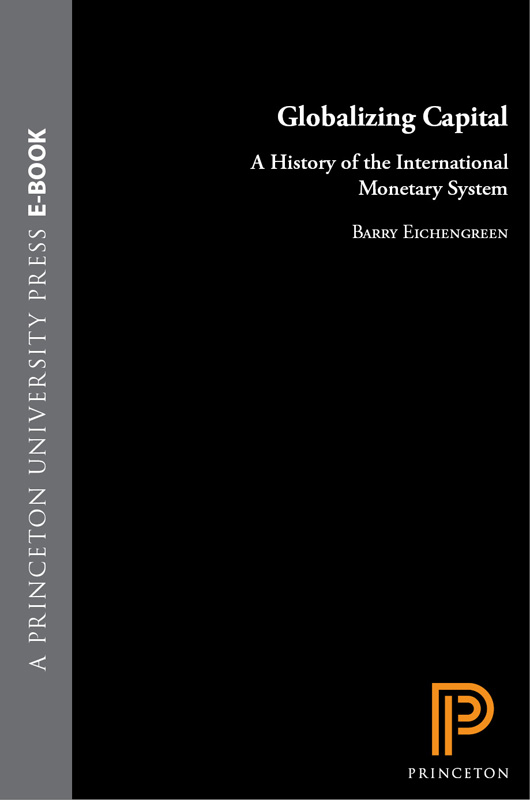
GLOBALIZING CAPITAL
BARRY EICHENGREEN
GLOBALIZING CAPITAL
A HISTORY OF THE INTERNATIONAL MONETARY SYSTEM
Second Edition
PRINCETON UNIVERSITY PRESS
PRINCETON AND OXFORD
Copyright 2008 by Princeton University Press
Published by Princeton University Press, 41 William Street, Princeton, New Jersey 08540
In the United Kingdom: Princeton University Press, 6 Oxford Street, Woodstock, Oxfordshire OX20 1TW
All Rights Reserved
Library of Congress Cataloging-in-Publication Data
Eichengreen, Barry J.
Globalizing capital : a history of the international monetary system / Barry Eichengreen.
2nd ed.
p. cm.
Includes bibliographical references and index.
ISBN 978-0-691-13937-1 (pbk. : alk. paper)
1. International financeHistory. 2. Gold standardHistory. I. Title.
HG3881 .E347 2008
332/.042 22 2008018813
British Library Cataloging-in-Publication Data is available
This book has been composed in Times
Printed on acid-free paper.
press.princeton.edu
Printed in the United States of America
1 3 5 7 9 10 8 6 4 2
T his history of the international monetary system is short in two senses of the word. First, I concentrate on a short period: the century and a half from 1850 to today. Many of the developments I describe have roots in earlier eras, but to draw out their implications I need only consider this relatively short time span. Second, I have sought to write a short book emphasizing thematic material rather than describing international monetary arrangements in exhaustive detail.
I attempt to speak to several audiences. One is students in economics seeking historical and institutional flesh to place on their textbooks theoretical bones. They will find references here to concepts and models familiar from the literature of macroeconomics and international economics. A second audience, students in history, will encounter familiar historical concepts and methodologies. General readers interested in monetary reform and conscious that the history of the international monetary system continues to shape its operation and future prospects will, I hope, find this material accessible as well. To facilitate their understanding, a glossary of technical terms follows the text: entries in the glossary are printed in italics in the text the first time they appear.
This manuscript originated as the Gaston Eyskens Lectures at the Catholic University of Leuven. For their kind invitation I thank my friends in the Economics Department at Leuven, especially Erik Buyst, Paul De Grauwe, and Herman van der Wee. The Research Department of the International Monetary Fund, the International Finance Division of the Board of Governors of the Federal Reserve System, and the Indian Council for Research on International Economic Relations provided hospitable settings for revisions. It will be clear that the opinions expressed here are not necessarily those of my institutional hosts.
Progress in economics is said to take place through a cumulative process in which scholars build on the work of their predecessors. In an age when graduate syllabi contain few references to books and articles written as many as ten years ago, this is too infrequently the case. In the present instance I hope that the footnotes will make clear the extent of my debt to previous scholars. This is not to slight my debt to my contemporaries, to whom I owe thanks for comments on previous drafts. For their patience and constructive criticism I am grateful to Michael Bordo, Charles Calomiris, Richard Cooper, Max Corden, Paul De Grauwe, Trevor Dick, Marc Flandreau, Jeffry Frieden, Giulio Gallarotti, Richard Grossman, Randall Henning, Douglas Irwin, Harold James, Lars Jonung, Peter Kenen, Ian McLean, Jacques Melitz, Allan Meltzer, Martha Olney, Leslie Pressnell, Angela Redish, Peter Solar, Nathan Sussman, Pierre Sicsic, Guiseppe Tattara, Peter Temin, David Vines, and Mira Wilkins. They should be absolved of responsibility for remaining errors, which reflect the obstinacy of the author.
This expanded edition updates the story from 1996, when the original version appeared. The subsequent period opened with the Asian financial crisis, a traumatic episode in which the exchange rate played a central role. It continued with European monetary unification, an event unprecedented in modern international monetary history. The period also saw the emergence of developing countries as key players in the international monetary system. It is impossible to understand how the United States was able to run such large current account deficits for much of this period, for example, without appreciating the incentives and actions of the developing countries that provided the bulk of the financing. Together, these developmentschronic U.S. deficits, the advent of the euro, and new consciousness on the part of emerging markets of their capacity to shape the international monetary systemraise questions about the role of the United States and the dollar in international financial relations going forward. This story is complex. I will suggest, perhaps predictably, that the best way of comprehending it by using the analytical framework set out in this book.
I have resisted the temptation to comprehensively revise earlier chapters, but I have made few small changes for internal consistency. I am grateful to Cheryl Applewood, Peter Dougherty, and Michelle Bricker, each of whom, in their different ways, provided the support needed to complete this second edition.
Berkeley
January 2008
GLOBALIZING CAPITAL
CHAPTER ONE
T he international monetary system is the glue that binds national economies together. Its role is to lend order and stability to foreign exchange markets, to encourage the elimination of balance-of-payments problems, and to provide access to international credits in the event of disruptive shocks. Nations find it difficult to efficiently exploit the gains from trade and foreign lending in the absence of an adequately functioning international monetary mechanism. Whether that mechanism is functioning poorly or well, it is impossible to understand the operation of the international economy without also understanding its monetary system.
Any account of the development of the international monetary system is also necessarily an account of the development of international capital markets. Hence the motivation for organizing this book into five parts, each corresponding to an era in the development of global capital markets. Before World War I, controls on international financial transactions were absent and international capital flows reached high levels. The interwar period saw the collapse of this system, the widespread imposition of capital controls, and the decline of international capital movements. The three decades following World War II were then marked by the progressive relaxation of controls and the gradual recovery of international capital flows. The fourth quarter of the twentieth century was again one of significant capital mobility. And the period since the turn of the century has been one of very high capital mobilityin some sense even greater than that which prevailed before 1913.
This U-shaped pattern traced over time by the level of international capital mobility is an obvious challenge to the dominant explanation for the post-1971 shift from fixed to flexible exchange rates. Pegged rates were viable for the first quarter-century after World War II, the argument goes, because of the limited mobility of financial capital, and the subsequent shift to floating rates was an inevitable consequence of increasing capital flows. Under the Bretton Woods System that prevailed from 1945 through 1971, controls loosened the constraints on policy. They allowed policymakers to pursue domestic goals without destabilizing the exchange rate. They provided the breathing space needed to organize orderly exchange rate changes. But the effectiveness of controls was eroded by the postwar reconstruction of the international economy and the development of new markets and trading technologies. The growth of highly liquid international financial markets in which the scale of transactions dwarfed official international reserves made it all but impossible to carry out orderly adjustments of currency pegs. Not only could discussion before the fact excite the markets and provoke unmanageable capital flows, but the act of devaluation, following obligatory denials, could damage the authorities reputation for defending the peg. Thus, at the same time that pegged exchange rates became more costly to maintain, they became more difficult to adjust. The shift to floating was the inevitable consequence.
Next pageFont size:
Interval:
Bookmark:
Similar books «Globalizing capital: a history of the international monetary system»
Look at similar books to Globalizing capital: a history of the international monetary system. We have selected literature similar in name and meaning in the hope of providing readers with more options to find new, interesting, not yet read works.
Discussion, reviews of the book Globalizing capital: a history of the international monetary system and just readers' own opinions. Leave your comments, write what you think about the work, its meaning or the main characters. Specify what exactly you liked and what you didn't like, and why you think so.

